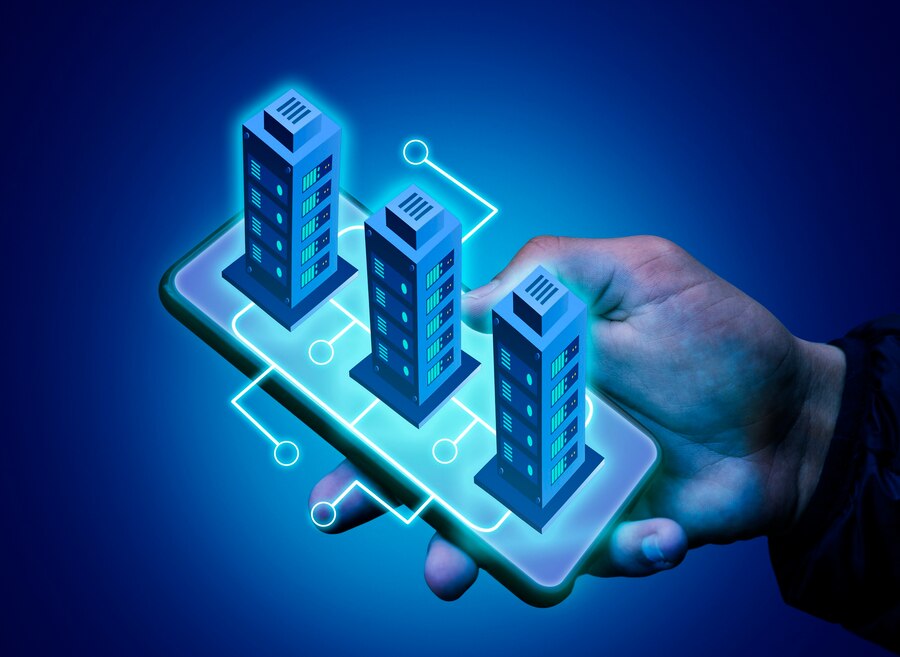Opinion column by Jean-Marc Jestin, Director, Kardham Engineering Southern Region and Frédéric Pitard, Technical Director, Kardham Digital, published in Smart City Mag on 16 October 2024.
The BACS decree is an important step towards more intelligent, energy-optimized buildings. But making buildings more sustainable and efficient by aligning them with occupants’ actual uses requires us to go further. We need to combine systems engineering and digital solutions in a comprehensive, flexible approach that is adapted to the reality of users’ journeys and operators’ needs.
By January 1, 2025, the BACS (Building Automation & Control Systems) decree will require commercial buildings with a power rating of over 290 KW (for heating, air-conditioning and ventilation systems) to install building automation engineering systems for this technical equipment. In other words, the decree requires the installation of a Building Automation System (BAS). The decree, which aims to make an energy-intensive industry more environmentally responsible, is part of a wider set of measures, including the Tertiary Decree, which imposes long-term energy reductions for buildings over 1,000 m², with deadlines set for 2030, 2040 and 2050.
A decree not yet reached and already outdated ?
While BMS systems enable certain actions to be automated to make the building more efficient – for example, by programming heating on and off according to office occupancy times – in their current form they are in need of improvement. Operating on the basis of predefined, static rules, they fail to take into account the dynamic variations in occupants’ lives. Such is the case in the post-Covid telecommuting context, where employee presence varies from day to day. These systems, which are often installed and parameterized during the building’s construction, even before the occupants are present, are not always adapted and updated to take account of the reality of usage and its evolution once the building has entered its operational phase. Faced with these limitations, the introduction of systems that encompass a wider range of uses, such as Building Operating Systems (BOS), is an additional layer adding intelligence, forecasting and flexibility to building management. These new approaches rely on the real-time convergence of dynamic data to proactively adjust technical systems to usage. A way of anticipating rather than reacting. The BOS is capable of collecting and interpreting data from a variety of sources, both internal and external to the building. Data from BMS systems and sensors, but also data from service applications, weather data, data linked to occupant habits, or even information on traffic flow in transport systems. If the aim of BACS is to manage buildings more effectively, this management can only be effective if buildings are seen as living objects integrated into their environment, and if they have a detailed understanding of their various flows.
Pragmatism, flexibility and inter-service collaboration
Implementation of the decree is all the more ambitious given the low level of BMS equipment in France today, with around 6% of commercial buildings equipped by the end of 2022*. Another challenge is the need to adapt skills within an industry that needs to be trained, structured and expanded to install and maintain these systems effectively. Let’s hope that the growing awareness of ecological issues and the January 1st deadline will be seen as an opportunity rather than a constraint, encouraging all players – building and IT – in the intelligent building value chain to work hand in hand towards this common goal. This is all the more true as progressive approaches are also possible to meet the decree’s requirements. For example, one of the first objectives of a smart building strategy is often to identify energy consumption in relation to the use made of the building’s resources by its teams. Installing sensors on electrical panels can be the first step. This data can then be analyzed by a BOS to identify areas for optimization, enabling initial savings to be made quickly, without having to deploy a complete BMS system. In addition to this targeted approach, the implementation of the decree has brought to the fore another key success factor, that of a distilled approach: interdisciplinary collaboration, notably between building engineering – which focuses on the design and management of technical equipment – and digital engineering, which focuses, in particular, on data analysis. The BOS plays a crucial role in this integration, enabling fluid interaction between data and equipment, thus optimizing the entire building system.
Data at the heart of intelligent buildings
It’s easy to understand that building smart means collecting and understanding the relationships between different types of data, linked to the occupant, the building system or the city. While mathematical technologies have always existed in the building industry, the introduction of artificial intelligence (AI) in BOS systems, with its ability to process data on a much larger scale, takes us a step closer to building autonomy. By analyzing historical data and identifying behavioral patterns, AI can anticipate future needs and adjust systems accordingly, without manual intervention. Another advantage of AI is that it can also identify trends and patterns of behavior in different buildings, making it possible to duplicate energy management strategies from one building to another, while retaining sufficient flexibility to adapt to local peculiarities.
The BACS decree is just the starting point for the construction of intelligent, autonomous buildings. The real challenge is to transform the industry into a key player in the energy transition, by meeting regulatory obligations of course, but also and above all by adopting a broader and more dynamic vision of the possibilities offered by digital technologies. Only then will tomorrow’s buildings be economically efficient, ever more responsible and ever more aligned with usage, capable of adapting to ever-changing expectations and environments.

